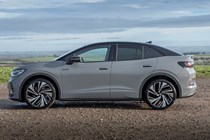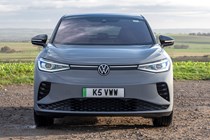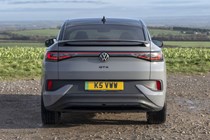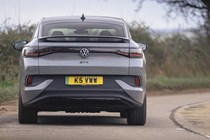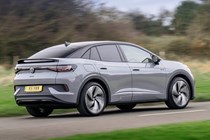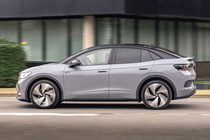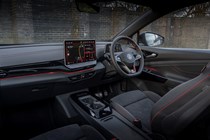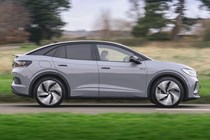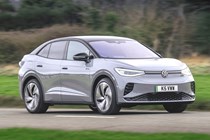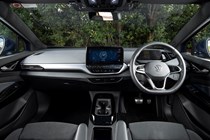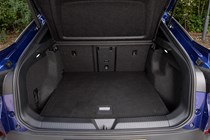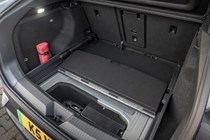
Volkswagen ID.5 running costs and reliability
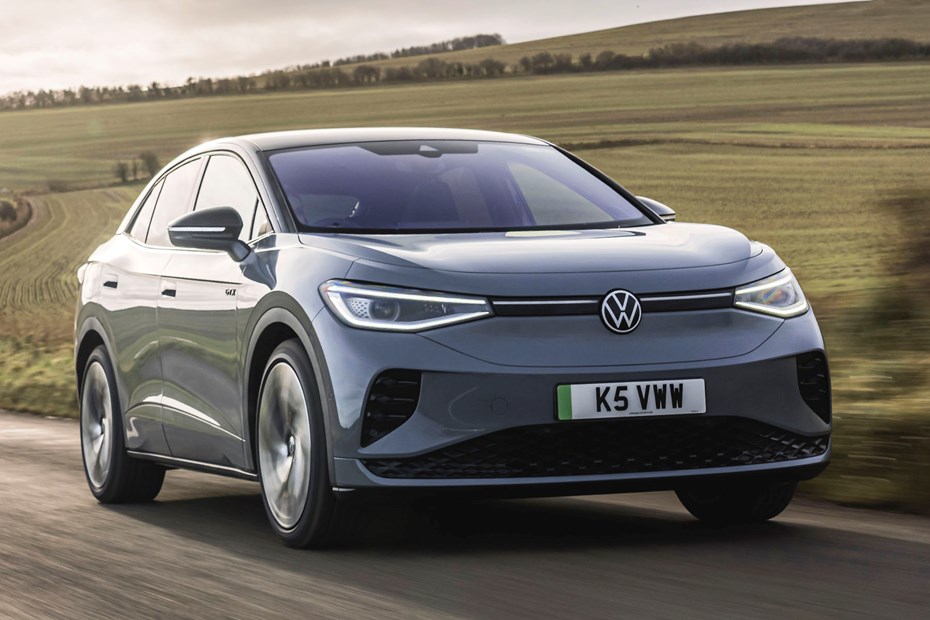
Miles per pound (mpp) ⓘ
| Electric motors, home charging | 11.2 - 18.2 mpp |
|---|---|
| Electric motors, public charging | 6.0 - 9.8 mpp |
Fuel economy ⓘ
| Electric motors | 3.8 - 6.2 miles/kWh |
|---|
- Only one battery size on offer
- Between 314-327 miles of driving range
- Should be cheaper to run than petrol or diesel
How much is it going to cost to run?
How much it costs to charge depends largely on how, where and when you charge it. Public charging for electric cars can be expensive, especially if you use a rapid charger. But if you can charge at home using an electric-car specific tariff, running an ID.5 should be cheap-ish.
At present expect it to cost substantially less than a conventional petrol or diesel SUV when charged at home. Its strong MPP figure of 6.0 - 18.2 highlights this.
Range and charging
All models of ID.5 are fitted with a 77kWh battery pack and have an impressively long driving range. The least powerful and middle-ranking models claim up to 327 miles on a full charge, while the range-topping and most powerful GTX versions claim up to 314 miles.
In the real world, the less powerful models offer a range closer to 300 miles, and the full-fat GTX sees that drop a little further. You’ll get a reliable 260 miles out of it, which is good but not brilliant.
The ID.5 will charge at up to 135kW from a powerful enough public charger – that’s good for an 80% top up in less than 30 minutes. If you’re charging at home from a 7kW wallbox, meanwhile, expect the full 0-to-100% charge to take more 12 hours. Most people rarely discharge their batteries fully, though, so don’t let that figure scare you too much.
Servicing and warranty
Service intervals are once per year or every 20,000 miles, whichever comes first. The ID.5 comes with a standard three-year/60,000-mile warranty, though the battery components are covered for 100,000 miles or eight years.
Reliability
- No recalls so far
- We’re hearing of issues with 12v batteries
- Infotainment issues are also not uncommon
It’s still too soon to say conclusively whether the ID.5 is reliable or not, but we’re hearing of infotainment glitches and problems while updating. UK breakdown recovery services are reporting that problems with the 12V battery are resulting in a failure to start – sometimes down to user error, sometimes down to software control problems.
Sometimes, the ID.5’s infotainment screen can be slow and unresponsive, even on new cars with less than 1,000 miles on them – but over the air updates have been fixing this. Early examples crashed while this process happened, resulting in a visit to the dealer in the worst cases.
A lot of the tech, most notably the electric motors, are proving reliable in service, but the aforementioned glitches have taken the shine off things. You can check the government website for up-to-date information too.
Ongoing running costs
| Road tax | £620 |
|---|---|
| Insurance group | 25 - 36 |
Get an insurance quote with

|
|



